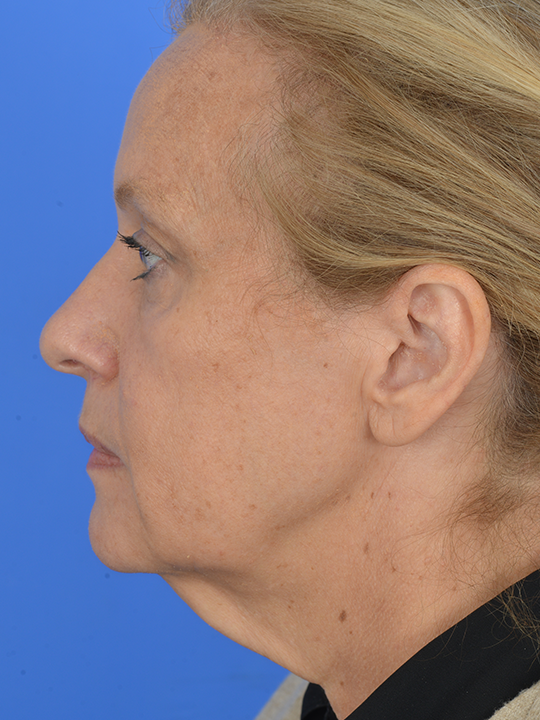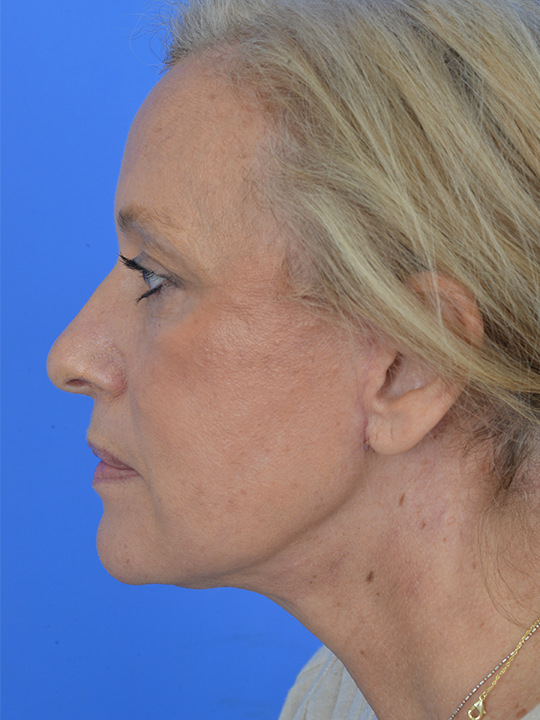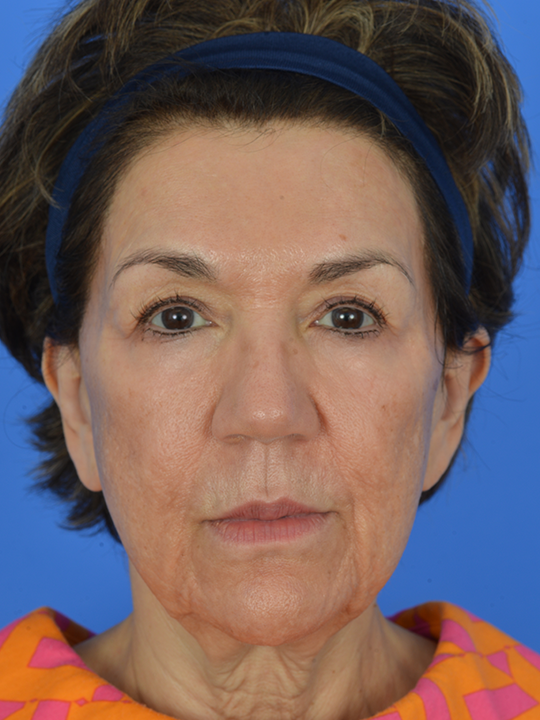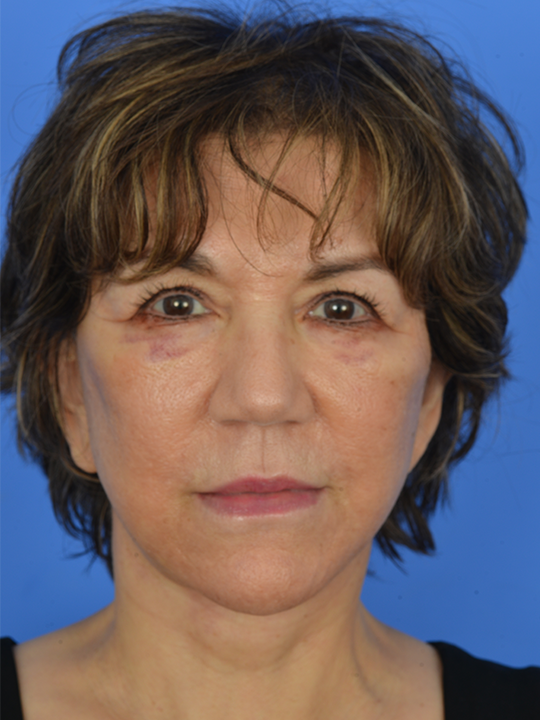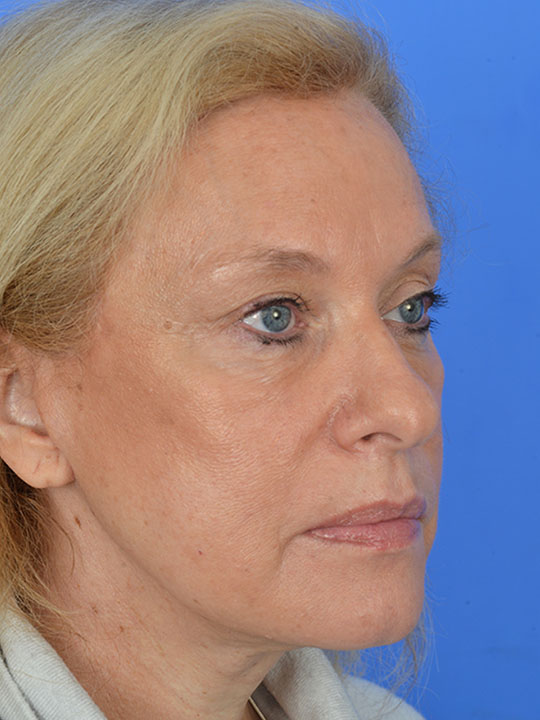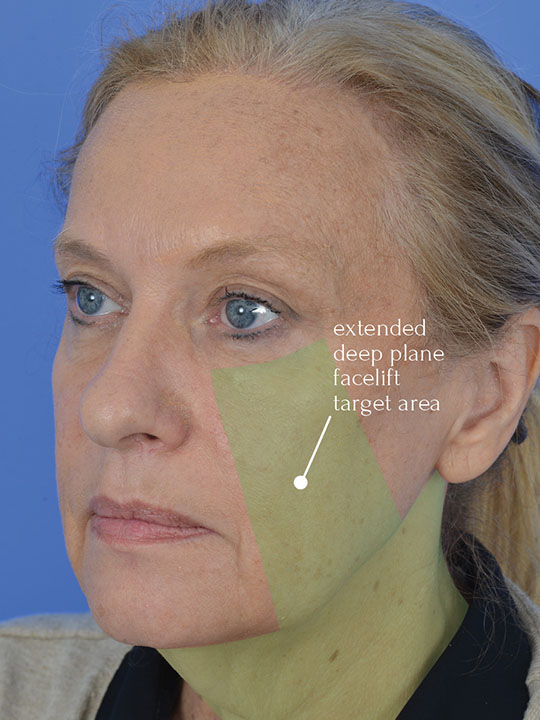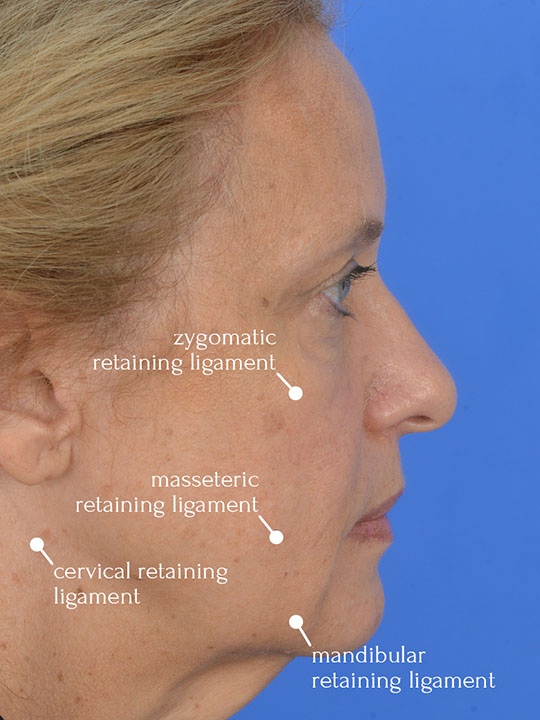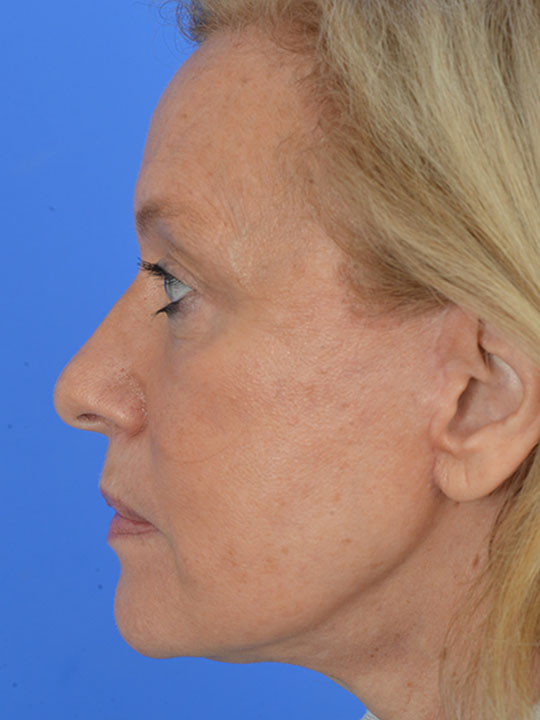 Model
Model
Extended Deep Plane Facelift In Houston, TX
As you age, the effects of time, gravity, and environmental factors begin to show themselves on your face. These changes are part of the natural aging process, but that doesn’t mean you have to accept them.
While a traditional facelift primarily relies on tension to lift the face and neck, Dr. Sean Delaney’s signature Extended Deep Plane Facelift focuses on releasing the facial retaining ligaments for a more natural and vertical elevation of your soft tissues. At Facial Plastic Surgery Associates, Dr. Delaney exclusively performs an Extended Deep Plane Facelift for patients who wish to restore a more refreshed, youthful appearance to their faces.

 Model
Model
What Is an Extended Deep Plane Facelift?
An Extended Deep Plane Facelift offers a comprehensive approach to facial rejuvenation by addressing aging changes in the “deep plane” underneath the superficial muscular aponeurotic system (SMAS) layer. This technique’s “extended” dissection involves the release of facial retaining ligaments, which allows for improvement of the midface, nasolabial folds, and corners of the mouth. These regions are usually not satisfactorily corrected with traditional facelift techniques. Unlike traditional facelifts that focus primarily on pulling as hard as possible on the SMAS, the Extended Deep Plane Facelift relies on releasing the facial retaining ligaments to permit a more dramatic lift with less tension for a more natural result.
Because the surgery is conducted at a deeper tissue level, there can be an enhanced correction of smile lines and the mid-cheek areas. Dr. Delaney also incorporates an Extended Deep Plane Neck Lift as part of the procedure, addressing sagging, excess skin, fullness, and banding in the neck for more comprehensive rejuvenation.
This approach can also provide better skin circulation during your body’s natural healing process because less skin is separated from its underlying SMAS. It may result in faster healing and less visible bruising. Regardless of age, there can be reduced downtime with this surgical approach.
What Can an Extended Deep Plane Facelift Achieve?
The key paradigm of an Extended Deep Plane Facelift is the complete release of the facial retaining ligaments contained underneath the SMAS layer to allow for a tension-free redraping of the facial and neck soft tissue. This release of the ligaments permits a more powerful vertical lift of the face and neck for a very natural rejuvenation result with improvements in smile lines, the corners of the mouth, and the jowls.
What Are the Benefits of an Extended Deep Plane Facelift?
- Natural-Looking Results: Refreshes your appearance without skin looking tight or as if you’d had anything “done.”
- Comprehensive Rejuvenation: Addresses age-related changes beginning under the eyes down to the lower neck.
- Restored Volume: By lifting and repositioning underlying facial muscles and fat pads, volume is naturally restored.
- Minimal Scarring: Strategic incision placement and low-tension closure minimize visible scarring.
- Increased Self-Esteem: By reversing signs of aging, patients feel more confident in their appearance.
- Lasting Results: An Extended Deep Plane Facelift can last at least ten years and sometimes longer with proper care.


How Is an Extended Deep Plane Facelift Different From Other Deep Plane Facelifts?
For Facelift surgery, you often hear the term “deep plane.” In truth, there is no standard definition, and plastic surgeons use varying degrees of this approach. Dr. Delaney focuses on the Extended Deep Plane surgical technique that includes an extended dissection within the deep plane of the face, reaching the nasolabial folds and corners of the mouth.
A traditional deep plane facelift may refer to any facelift procedure in which some work is performed underneath the SMAS layer. This sometimes may mean a deep plane dissection of one to two centimeters only. In contrast, an Extended Deep Plane Facelift addresses signs of aging in additional areas closer to the center of the face by dissecting further and releasing the facial retaining ligaments. This advanced technique offers a more comprehensive approach, adjusting the deep muscular layers of the midface, lower face, jawline, and neck.
The Extended Deep Plane Facelift addresses aging concerns that are often difficult to treat with a traditional deep plane facelift, such as jowls or deeply etched nasolabial folds. And, because an Extended Deep Plane Facelift is tailored according to your individual facial anatomy, you’ll receive personalized, beautiful results.

 Model
Model
How Is an Extended Deep Plane Facelift Different From SMAS Techniques?
Your face has a network of fibrous tissues connecting the temples to the cheeks and neck called the SMAS. It starts sagging as aging progresses, taking the skin on top along with it.
During a SMAS facelift, the skin is elevated off the surface of the SMAS, and the SMAS is folded over itself and suspended vertically. With this technique, the SMAS is not cut.
A deep plane facelift refers to any procedure in which the SMAS is incised and the work is performed beneath the SMAS layer.
With an Extended Deep Plane Facelift, most of the operation is performed beneath the SMAS layer. The facial retaining ligaments (zygomatic, masseteric, cervical, and mandibular) that can only be accessed in the deep plane are released to allow the facial tissue to redrape vertically.


SMAS Facelift
What Does a SMAS Facelift Address?
A SMAS facelift, more commonly known as a traditional facelift, focuses on the Superficial Musculoaponeurotic System (SMAS) of your face. The SMAS is a layer of tissue composed of collagen and elastin fibers, muscle fibers, and fat cells, and it separates the subcutaneous level of your skin from the underlying muscles and nerves. Like your skin, the SMAS layer weakens with time, so this type of facelift is used to lift and reposition the tissue, rejuvenating the appearance of your face.
Technical Information
A SMAS facelift lifts the skin and SMAS separately. With an Extended Deep Plane Facelift, most of the operation is performed beneath the SMAS layer, lifting the skin and SMAS as one unit.
Optimal Candidates
Patients with moderate signs of aging without significant deepening of the nasolabial folds or corners of the mouth.
Recovery Time
The recovery time for a SMAS facelift is a bit longer than that of an Extended Deep Plane Facelift because there is more subcutaneous dissection. The skin is adherent to the underlying SMAS, so in order to separate the two layers, the skin must be sharply separated from the SMAS, resulting in more swelling and potential bruising.
Longevity of Results
The SMAS facelift only addresses the superficial levels of your face, so signs of aging will reappear sooner than if you undergo an Extended Deep Plane Facelift.
Learn MoreExtended Deep Plane Facelift
What Does an Extended Deep Plane Facelift Address?
An Extended Deep Plane Facelift releases the ligaments that anchor the muscle and connective tissues in your face, allowing for dramatic yet natural-looking results. It separates the skin and SMAS layer (as one unit) from the underlying muscle and ligaments in your face. The ligaments are released, allowing the tissues and fat of the cheeks and lower face, as well as the SMAS layer, to be lifted and anchored into a more youthful position on your face. The ligament release is the primary differentiator between the two types of facelifts, as an Extended Deep Plane Facelift allows for more comprehensive and longer-lasting facial rejuvenation.
Technical Information
Results of a SMAS facelift may appear more “stretched” because while excess tissues are trimmed away and rearranged, the SMAS layer is still held down by the ligaments. An Extended Deep Plane Facelift is more of a true “lift” procedure because releasing the ligaments allows for the elevation of the underlying muscle, fat, and tissues.
Optimal Candidates
Patients with advanced signs of aging, particularly those with midface hollowing, deepening nasolabial folds, and downturned corners of the mouth.
Recovery Time
Recovery is typically a bit shorter than that of a SMAS facelift because there is less subcutaneous dissection. The deep plane is a natural glide plane, so dissection within this plane is performed primarily bluntly, which results in a much gentler dissection with faster healing. Most of Dr. Delaney’s patients only need to take about two weeks off of work and are back to their regular routines after three weeks.
Longevity of Results
Because an Extended Deep Plane Facelift targets facial aging on a more significant level than a SMAS lift, the results of a deep plane facelift typically last longer.
Who Is the Ideal Candidate For an Extended Deep Plane Facelift?
When you look in the mirror there are four general signs of facial aging that are indicative of a need for facelift surgery. The primary signs are: jowling, deep nasolabial folds, bunching of skin around your mouth, and/or hanging skin or banding in the neck area.
In general, Dr. Delaney finds the 40s and 50s to be the optimal age for an Extended Deep Plane Facelift. However, men and women in the 60s and 70s can also obtain superb results.
No other cosmetic practice in Houston provides the level of preoperative, operative, and postoperative care that FPSA does.
What Can I Expect After My Extended Deep Plane Facelift?
Each Extended Deep Plane Facelift is performed in our AAAHC-accredited operating room. Once your surgery is complete, you will be taken to our recovery area, where you are monitored and prepared for release by Dr. Delaney and our clinical team. You will have a soft compressive dressing around your head to protect the surgical incisions from your procedure, as well as surgical drains.
Dr. Delaney requires his Extended Deep Plane Facelift patients to stay overnight in the Hotel Chifley (Tapestry Collection by Hilton), located one block from our office, where you will be accompanied and cared for by a registered nurse.
You will return to our office for your first postoperative appointment the following morning. Dr. Delaney will examine you, remove the drains, and replace the original surgical dressing with a smaller dressing.
At your next post-op visit, typically the second or third day after surgery, one of our team will continue to care for you by gently washing your hair before you see the doctor. After this appointment, you will switch to a facial sling. This sling is worn 24/7 for the first week and only at night for the second week. Dr. Delaney and his team will provide comprehensive post-op recovery instructions to ensure you heal properly.
Immediately after surgery, we recommend that you swivel at the waist rather than turn your neck to avoid pulling on your sutures. This means you cannot drive for at least one week after surgery. For the first two weeks, sleep on your back with your head elevated above your heart. It is essential to keep your neck from flexing forward, so you can use a flat pillow or no pillow. You can shower beginning the day after your hair is washed in our office.

 Model
Model
What Can I Expect From My Extended Deep Plane Facelift Recovery?
After your Extended Deep Plane Facelift surgery, you will experience some bruising, swelling, and numbness around the incisions. However, these are expected side effects and will resolve as you recover. Any discomfort can be managed with over-the-counter or prescription pain medication.
Dr. Delaney recommends taking two weeks off of work after your Extended Deep Plane Facelift to give yourself time to heal and for bruising and swelling to dissipate. Makeup can be gently applied a few days after surgery as long as you avoid your incisions. If you bruise easily, it may take longer for discoloration to fade, so we advise you to plan your surgery at least five weeks before any important public event.
Three weeks after surgery, most patients are back to their regular routines. However, you should avoid lifting anything heavy or engaging in strenuous activities for four to five weeks after your Extended Deep Plane Facelift.
To ensure proper healing and optimal results, it is essential that you follow Dr. Delaney’s postoperative care plan to the letter. Dr. Delaney also incorporates platelet-rich plasma therapy (PRP) to enhance healing after your Extended Deep Plane Facelift, and patients may also choose to undergo hyperbaric oxygen therapy to accelerate the recovery process.
What Can I Expect From My Extended Deep Plane Facelift Results?
After your surgery, you will see immediate results from your Extended Deep Plane Facelift. However, as the swelling and bruising fade and your face settles into its new contours, you will continue to see improvements in your appearance. Most patients see their final results around six months after surgery.
Your Extended Deep Plane Facelift results typically last around 10 to 15 years before you may require touch-ups. However, while an Extended Deep Plane Facelift can refresh and rejuvenate your appearance, the natural aging process will continue. The longevity of your facelift results depends on several factors, including genetics, lifestyle, skincare, and sun exposure. Staying hydrated, following a healthy diet and skin care regimen, and being diligent about applying sun protection can all help extend your results.


Can I Combine Other Procedures With My Extended Deep Plane Facelift?
It is very common for patients to choose to combine other facial rejuvenation procedures with their Extended Deep Plane Facelift. Patients often choose to have a brow lift and/or upper or lower eyelid surgery to address weakened muscles in the eyebrow area and eyelids that cause them to look older than they are or to address excess skin and under-eye bags for comprehensive facial rejuvenation. You may also choose to undergo facial fat transfer or temporal implants to address facial volume loss. We also offer several surgical and non-surgical skin tightening and resurfacing procedures.
Combining additional procedures with your Extended Deep Plane Facelift not only offers enhanced results but also allows you to avoid multiple surgeries and the associated recovery periods.
What Are the Risks of an Extended Deep Plane Facelift?
Risks associated with an Extended Deep Plane Facelift include infection, swelling, bruising, bleeding, asymmetry, and facial nerve damage. However, as with any procedure, you can minimize your risks by choosing Dr. Sean Delaney, a double board-certified facial plastic surgeon with extensive experience in Extended Deep Plane Facelifts.
Why Choose Dr. Sean Delaney for Your Extended Deep Plane Facelift?
Dr. Sean Delaney is a double board-certified facial plastic surgeon focusing exclusively on face and neck procedures, ensuring a deep understanding of aesthetic and functional outcomes. His extensive training in otolaryngology (head and neck surgery) and facial plastic surgery provides him with the knowledge, skill, and experience to achieve natural, long-lasting results.
Dr. Delaney is particularly skilled in performing Extended Deep Plane Facelifts, a technique that offers comprehensive facial rejuvenation without looking like you’ve had anything “done.” He customizes every treatment plan to meet his patient’s individual concerns and goals, whether through surgical or non-surgical techniques or a combination of both.
With a philosophy centered on achieving the most harmonious and natural-looking results, Dr. Delaney is an excellent choice when you’re seeking the best in Deep Plane Facelift surgery.
Begin Your Journey With Facial Plastic Surgery Associates
Discover firsthand how effortless your journey will be to enhance your natural beauty and achieve your aesthetic goals. At Facial Plastic Surgery Associates, you can feel confident that you will be in the best, most caring hands every step of the way. Schedule a comprehensive consultation for Extended Deep Plane Facelift surgery with your dedicated expert, Dr. Sean Delaney.
Schedule a Consultation

Let's Get Social
Connect with Us on Our Social Channels
Stay connected with us on social media and witness the impact Facial Plastic Surgery Associates has on the lives of our patients.



